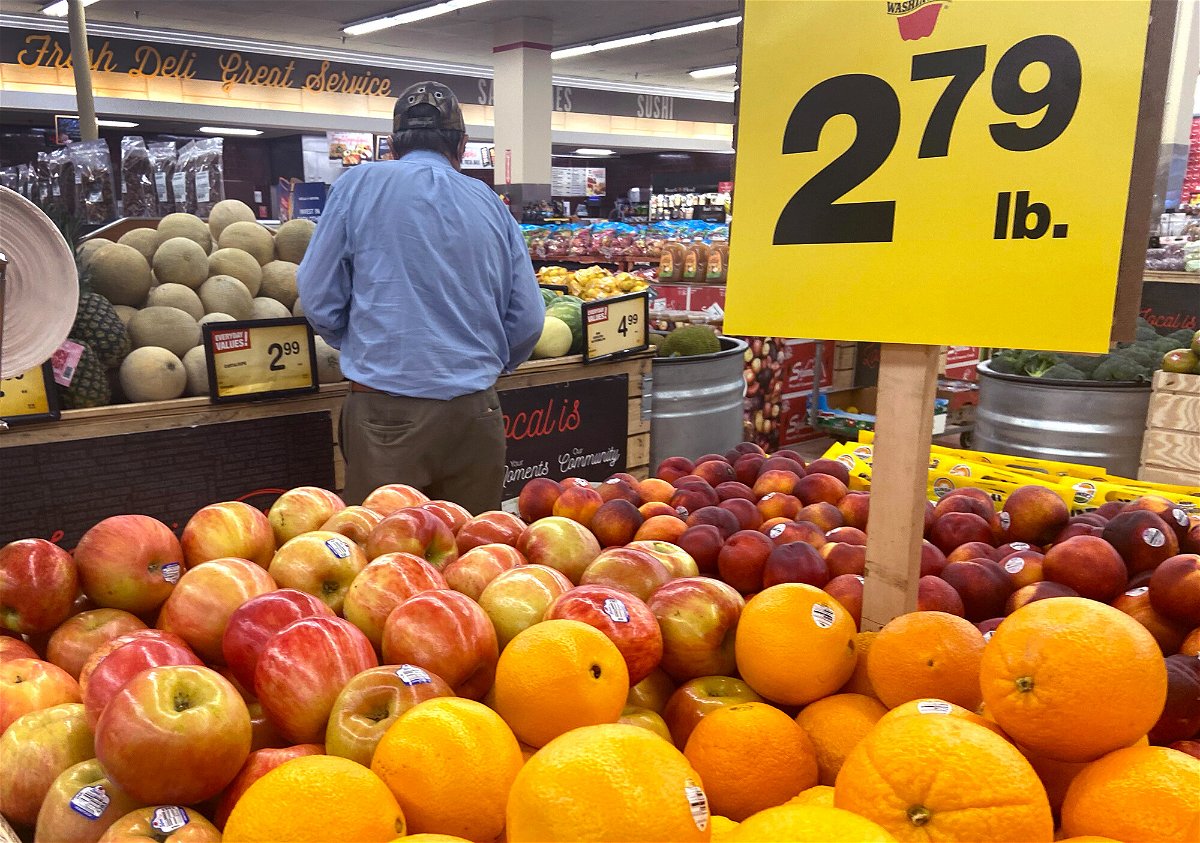Prices are still rising. Here’s what’s getting more expensive

Overall
By Moira Ritter, CNN Business
America’s prices are continuing to rise as the economy recovers from the pandemic, and consumer wallets are feeling the squeeze. If you’re looking for a bright side, though, prices didn’t rise as much in July as in prior months, indicating that price increases might at least be slowing down a little bit.
Without including the volatile food and energy categories, consumer prices increased 4.3% in the 12-month period ending in July, slightly lower than June’s increase. Overall prices rose 5.4%, the same increase seen in June.
Looking at just the month of July, consumer prices rose 0.5% on the whole, less than the 0.9% increase for the prior month. Removing food and energy, prices rose 0.3% in the month of July.
Here’s what you need to know about what got more expensive last month.
Food
It’s back to school season, but if you were counting on starting your kids’ mornings with a bowl of cereal or packing a sandwich and cookie in their lunchboxes, you might be in for an expensive meal. The price of cereals and bakery products — which declined in June — rose 1.2% in July, marking the largest one-month increase since April 2020.
Cookies are 1.9% more expensive. Doughnuts are 2.8% more expensive. And crackers and cracker products are up a whopping 3.7%.
As usual, meat, poultry, fish, eggs and dairy got more expensive last month.
In past months, one glimmer of hope in these reports has been frankfurters’ prices decreasing. We hate to be the bearer of bad news, but with an increase of 4.8%, hot dogs saw the biggest price jump of any meat product in July. Pork roasts, steak and ribs also had significant increases and are now 4.4% more expensive.
Despite the frankfurter news, there are still some prices that decreased this month. If you need meat, maybe opt for ham, which is 1.5% cheaper. Fresh fruits and vegetables also got cheaper in July. Citrus fruits are now 5.4% cheaper, so load up on oranges, lemons and limes.
Overall, food prices jumped 0.7% during the month of July and are up 3.4% from this time last year.
Although food prices rose last month, it still might be cheaper to head to the grocery store and enjoy a home cooked meal. The price of food in restaurants or for take out rose 0.8% in July, its largest monthly increase since February 1981. Compared to this time last year, that’s a 4.6% increase.
Gas
Gas prices have been on a steady uptick, recently reaching seven-year highs. Prices rose 2.4% over the month of July. Compared to this time last year, gas is more than 41% more expensive. As of Wednesday morning, the average price per gallon is $3.19, according to AAA.
The Biden administration is now calling on the Organization of the Petroleum Exporting Countries and its allies to do more to regulate rising prices as vaccines and the pandemic recovery are spiking demand for gas.
Clothing
Clothing prices had been down since the start of the pandemic, but it seems they are rebounding as the economy continues to reopen — at least before the Delta variant hit.
Although clothing prices overall didn’t change in July, some categories skyrocketed. Women’s dress prices rose 5.5% over the one-month period and are up 18.8% over the last year. Men’s suits and sport coats increased 2.9% in July. These prices may be cheaper than before the pandemic, but as return-to-the-office plans are solidified and vaccinations continue, prices could continue to rise.
If you’re itching to buy something new but don’t want to hurt your wallet, women’s outerwear prices fell 2.6% last month and men’s footwear fell 1.2%.
Cars and trucks
Car prices are skyrocketing. That’s not exactly news — new car inventories have been strained for months because of a global computer chip shortage plus supply-chain disruptions.
New vehicles were 1.7% more expensive in July. Although prices are still rising, this is a smaller increase than in June when prices rose 2%.
Don’t hold your breath, though. New car inventories aren’t expected to begin recovering until September -— and will remain well below their pre-pandemic levels through next year, according to a recent Goldman Sachs report.
Although new vehicle prices are still rising, the used car frenzy might be coming to an end. Used car prices are still up 41.7% since this time last year, but in the month of July, prices only rose 0.2%, a lot less than the 10.5% rise in June.
Lodging
As more Americans have been vaccinated, travel demand has spiked, sending hotel prices through the roof. In July hotel and motel prices jumped 6.8%, a little less than June’s 7.9% increase. Over the past year, hotel and motel prices have surged 24.1% thanks to increasing travel demand that has accompanied pandemic recovery.
But while lodging prices increase, other travel prices that have been steadily rising dropped or grew at a much slower rate. Rental car prices, which are up a total of 73.5% since last summer, dropped 4.6% in July. And airline fares, up a total of 19% over the past year, fell 0.1% in July.
The-CNN-Wire
™ & © 2021 Cable News Network, Inc., a WarnerMedia Company. All rights reserved.